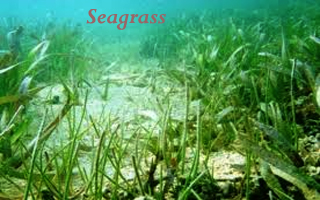Seagrass

Common Name
Seagrass
Scientific Name
Zostera marina
Kingdom
Plantae
Order
Alismatales
Family
Hydrocharitaceae (Frogbit family), Cymodoceaceae
Habitat
Seagrass grows on both temperate and tropical locations. Seagrass is a masking place to marine life such as fish, crustaceans, mollusks, clams, worms, starfish, sea cucumbers, sea urchins, and many other sea creatures.
Uses
Historically seagrasses were collected as fertilizer for sandy soil. This was an important use in the Ria de Aveiro, Portugal, where the plants collected were known as moliço. Some human uses of seagrasses are as weaving material for dolls, mats, and baskets (especially Zostera and Thallasia by native Americans). The Misquito people of Nicaragua also ate the seeds of Thallasia.
Size
2 m(6 1/2 foot)
Types
Amphibolis antarctica, Posidonia australis, Halodule uninervis, Cymodocea angustata, Cymodocea serrulata, Halophila decipiens, Halophila ovalis, Halophila minor, Halophila spinulosa, Posidonia coriacea, Syringodium isoetifolium
Edible
The entire part of the plant, also eat the lengthy salty-tasting grass. Seagrass Roots - uncooked otherwise cooked
Color
Green
 Deep Sea Crabs
Deep Sea Crabs